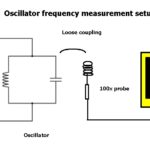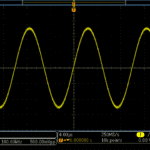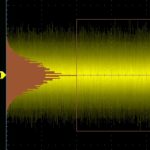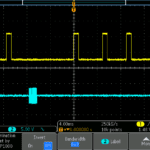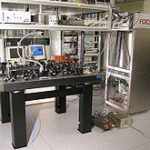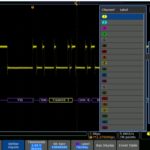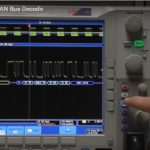Usually a capacitor’s value in microfarads or picofarads is printed on its housing or there is a color code there. But sometimes we need to measure the amount of capacitance. For example, an electrolytic capacitor may lose capacitance over time (and exhibit more series resistance as well). In critical applications, this effect can be catastrophic. […]
basics
Basics of LC oscillators and their measurement
Capacitors and inductors can be combined to create resonant circuits, which have pronounced frequency characteristics. The amount of capacitance and inductance of these devices determine both the resonant frequency and the sharpness of the response curve (known as Q) that these circuits exhibit. If the capacitance and inductance are in parallel, at resonance the parallel […]
Waveforms in oscilloscopes and elsewhere
Waveforms are patterns of signals that propagate through a medium such as water or air, or in the case of electromagnetic radiation, through empty space with no apparent material medium. (It is still not known how this is possible.) Electrical current, of course, can also propagate as a waveform. We call these patterns “waves” because […]
How to display histograms on oscilloscopes
Histograms are used to display graphically continuous variables. They are relevant in many areas including digital photography, census data, actuarial statistics and, as we shall see, signal measurements in an oscilloscope. In digital photography, an image histogram is a graphical representation of the tonal distribution. The graph depicts the number of pixels for each tonal […]
MIL-STD 1553 bus: Making measurements and connections
MIL-STD-1553 was first used by the US Air Force in 1973 to define a serial data bus for military aircraft, notably the F-16 Fighter. It soon began to be a means of moving data in many other US military jets, as well as in domestic and foreign avionics, showing up even in the Russian MIG-35. […]
Measuring the Universal Serial Bus (USB)
The average person on the street, computer literate since childhood, is familiar with the look and feel of a USB cable and is generally aware of the difference between types A and B plugs that go into host and peripheral ports respectively. It is also common knowledge that specialized cables with mini and micro plugs […]
In search of accuracy: Instrument calibration using frequency standards
Accuracy as it relates to the measurement of electrical signals would seem to be a simple, straight-forward concept. In the simple case, a reading as shown in a digital display could be compared to that of a perfectly accurate instrument. The discrepancy, if any, could be expressed as a fraction of a percent. The difficulty […]
In search of accurate measurements — The speed of light
If an instrument is to give accurate measurements, it must first have been calibrated to a standard. In metrology, a standard (or etalon) is an object, system, or experiment that bears a defined relationship to a unit of measurement of a physical quantity. Standards are the fundamental reference for a system of weights and measures, […]
Basics of the FlexRay Bus
As automobile development has continued apace, some new highly complex and critical subsystems have emerged. Simple networks such as CAN Bus and LIN Bus have long handled communications among controllers and electromechanical automotive systems, but an enhanced communication bus eventually became necessary to handle higher-bandwidth connections. Accordingly, a consortium developed standards for what came to […]
Exploring the CANbus with an oscilloscope
The Controller Area Network (CAN) Bus was introduced in 1983 by Robert Bosch GmbH, a multinational engineering and electronics company headquartered in Germany. CAN Bus was originally designed to let microcontrollers and devices communicate without a host computer. It was primarily intended for automotive applications but is currently used additionally in elevators, video games, human […]

